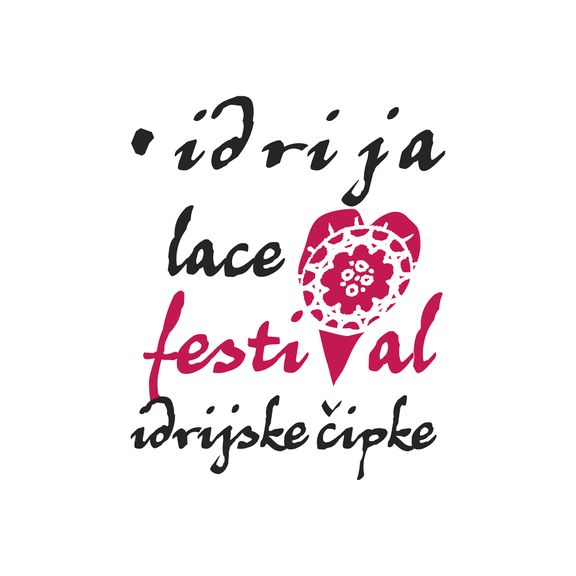Difference between revisions of "Idrija Lace Festival"
(infobox, programme) |
|||
| Line 1: | Line 1: | ||
{{Article | {{Article | ||
| − | | status = WRITING | + | | status = WRITING TOPROOFREAD NIFERTIK! |
| maintainer = Admin | | maintainer = Admin | ||
}} | }} | ||
| Line 6: | Line 6: | ||
| name = Idrija Lace Festival | | name = Idrija Lace Festival | ||
| localname = Festival idrijske čipke | | localname = Festival idrijske čipke | ||
| − | | street = | + | | street = Vodnikova 3 |
| town = SI-5280 Idrija | | town = SI-5280 Idrija | ||
| − | | telephone = 386 (0) 5 | + | | telephone = 386 (0) 5 374 3916 |
| − | | fax = 386 (0) 5 | + | | fax = 386 (0) 5 374 3915 |
| − | | email = | + | | email = ticidrija@icra.si |
| website = http://www.idrija-turizem.si | | website = http://www.idrija-turizem.si | ||
| − | | organised by = | + | | organised by = Tourist Information Centre Idrija |
| contacts = {{Contact | | contacts = {{Contact | ||
| name = Mirka Rupnik | | name = Mirka Rupnik | ||
| Line 25: | Line 25: | ||
==Background== | ==Background== | ||
| − | The second oldest and largest mercury mine in the world (closed in 1995) has shaped the lifestyle and local economy. Bobbin-lace making was introduced into Slovenia from the Czech and German lands of the Austro-Hungarian monarchy more than 300 years ago; the first mention goes back to the year 1696. Idrija gradually developed its own techniques and design patterns. In 1876 a lace school was established and its activities achieved European dimensions. Lace was exported worldwide the same as mercury. During the last decade the [[Municipality of Idrija]] has encouraged the establishment of the Idrija Lace brand, supported by the Interreg programme. | + | The second oldest and largest mercury mine in the world (closed in 1995) has shaped the lifestyle and local economy. Bobbin-lace making was introduced into Slovenia from the Czech and German lands of the Austro-Hungarian monarchy more than 300 years ago; the first mention goes back to the year 1696. Idrija gradually developed its own techniques and design patterns. In 1876 a lace school was established and its activities achieved European dimensions. Lace was exported worldwide the same as mercury. During the last decade the [[Municipality of Idrija]] has encouraged the establishment of the Idrija Lace brand, supported by the ''Interreg'' programme. |
==Programme== | ==Programme== | ||
| − | + | During the festival a national lacemaking competition is held for children and adults, leading to the presentation of the [[Ivanka Ferjančič Award]] (initially supported by the EU ''Culture 2000'' programme). | |
| − | Exhibitions are held | + | Exhibitions are held mainly at [[Gewerkenegg Castle]] in Idrija and the main one in 2010 sums up the role of this craft for the local community in the past – ''Wealth For the Rich, Blessing For the Poor''. Each year the festival features also exhibitions of international lace (e.g. Belgian Bevern, Hungaria Halas lace, Estonia). The collaborations with the [[Department of Textiles, University of Ljubljana]] are encouraged (e.g. the students' exhibition ''Lace: Tradition in the Modern World'' in 2003)). |
| + | |||
| + | The festival is accompanied by the international lacemakers gathering, workshops, demonstrations, competitions, concerts and outdoor parties. | ||
==See also== | ==See also== | ||
| Line 36: | Line 38: | ||
==External links== | ==External links== | ||
| − | * [http://www.idrija-turizem.si/ | + | * [http://www.idrija-turizem.si/content/blogcategory/51/225/ Idrija Lace Festival web page] |
* [http://www.burger.si/DOGODKI/2008_IdrijaCipke/seznam.html VR panoramas of the 2008 festival] on [[Virtual Guide to Slovene Museums and Galleries|Burger.si]] website | * [http://www.burger.si/DOGODKI/2008_IdrijaCipke/seznam.html VR panoramas of the 2008 festival] on [[Virtual Guide to Slovene Museums and Galleries|Burger.si]] website | ||
Revision as of 17:50, 15 June 2010
Background
The second oldest and largest mercury mine in the world (closed in 1995) has shaped the lifestyle and local economy. Bobbin-lace making was introduced into Slovenia from the Czech and German lands of the Austro-Hungarian monarchy more than 300 years ago; the first mention goes back to the year 1696. Idrija gradually developed its own techniques and design patterns. In 1876 a lace school was established and its activities achieved European dimensions. Lace was exported worldwide the same as mercury. During the last decade the Municipality of Idrija has encouraged the establishment of the Idrija Lace brand, supported by the Interreg programme.
Programme
During the festival a national lacemaking competition is held for children and adults, leading to the presentation of the Ivanka Ferjančič Award (initially supported by the EU Culture 2000 programme).
Exhibitions are held mainly at Gewerkenegg Castle in Idrija and the main one in 2010 sums up the role of this craft for the local community in the past – Wealth For the Rich, Blessing For the Poor. Each year the festival features also exhibitions of international lace (e.g. Belgian Bevern, Hungaria Halas lace, Estonia). The collaborations with the Department of Textiles, University of Ljubljana are encouraged (e.g. the students' exhibition Lace: Tradition in the Modern World in 2003)).
The festival is accompanied by the international lacemakers gathering, workshops, demonstrations, competitions, concerts and outdoor parties.




